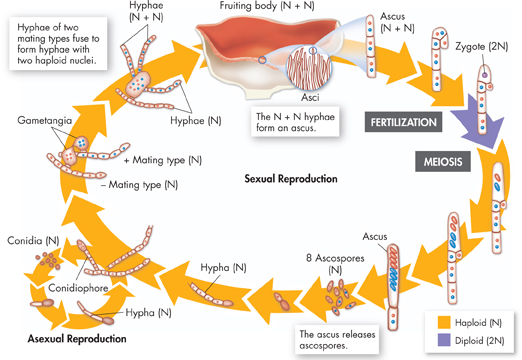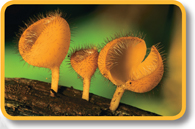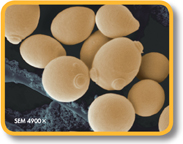Ascomycetes 
The ascomycetes, or sac fungi, are named for the ascus (AS kus), a saclike reproductive structure that contains spores.
Life Cycle The ascomycete life cycle includes an asexual phase, in which haploid spores are released from structures called conidiophores, and a sexual phase.

Diversity There are more than 50,000 species of ascomycetes, making it the largest phylum of the Fungi. Some ascomycetes, such as morels and cup fungi, are large enough to be visible when they grow above ground. Others, such as the common yeasts used for baking bread, are microscopic.

An edible morel in genus Morchella

A cup fungus (genus Cookenia)

Saccharomyces cerevisiae, the yeast used to raise bread dough, is a unicellular ascomycete that reproduces asexually by budding.
Table of Contents
- Formulas and Equations
- Applying Formulas and Equations
- Mean, Median, and Mode
- Estimation
- Using Measurements in Calculations
- Effects of Measurement Errors
- Accuracy
- Precision
- Comparing Accuracy and Precision
- Significant Figures
- Calculating With Significant Figures
- Scientific Notation
- Calculating With Scientific Notation
- Dimensional Analysis
- Applying Dimensional Analysis




